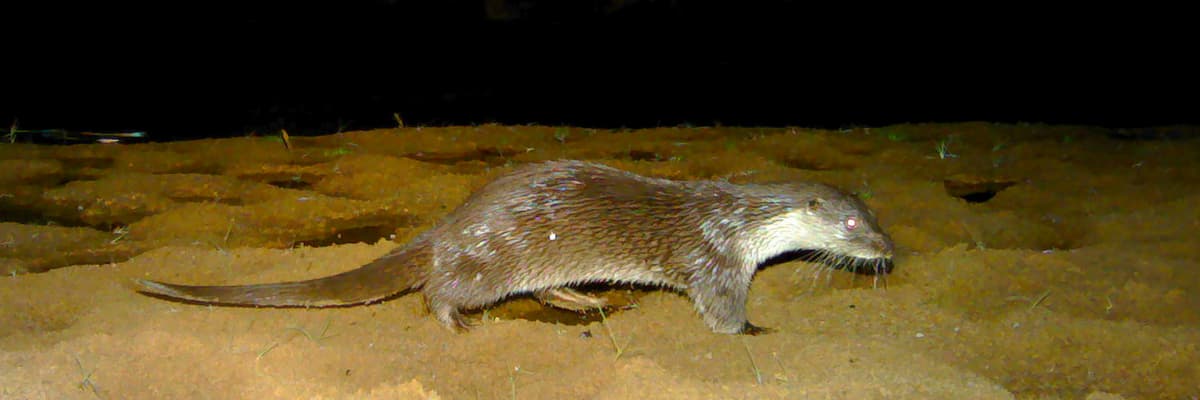The discovery of Eurasian Otters, comes as a wave of new hope to conservationists and environmentalists alike, as these creatures have found a new home in the Indian landscape.

Photo: WCT
A species never recorded nor documented in the Central Indian Landscape(CIL), the Eurasian otters (Lutra lutra) now seem to be clawing their way back into the wild. In the month of June 2016, Wildlife Conservation Trust (WCT) landed upon visual evidence during a field project at Satpura Tiger Reserve, monitoring the tiger population in the area. It was during the compilation of the data that WCT came across a camera-trap photo of a long, sleek and brown otter darting across the frame of the photograph.
Considered to be one of the rarest Indian mammals, this fish-eating animal has been categorised as ‘Near Threatened’ (NT) by International Union for Conservation of Nature and Natural Resources (IUCN). Otters are amicable creatures found in all probable settings of wetland and river ecosystems like, rivers, lakes, streams, fjords, marshes, swamps, ocean shores, freshwater and peat forests, spending their entire life foraging in water and resting on land. These amphibious mammals are ardent fish consumers, depending on slow moving, nutrient dense species such as eels, butterfish, crayfish, frogs and various water birds. Their presence in the environment presents an image of a self-sufficient and thriving freshwater ecosystem.
Although sadly enough, the numbers of the species have been constantly dipping, getting pushed to ‘Vulnerable’ category of IUCN Red List in 2000, before finally hitting ‘Near Threatened’ in 2004 and 2008. According to a report published by TRAFFIC [a strategic alliance of IUCN and WWF to check and curb illegal trade of flora and fauna], the main reason apart from the habitat loss is the existence of a humongous black market dealing in pelts of these animals along with illegal pet trade of otter pups. According to an assessment carried out by TRAFFIC on different species of otters, it was found that all the four species, namely, Hairy nosed otter (Lutra sumatrana), Small clawed otter (Amblonyx cinereus), Smooth Coated otter (Lutrogale perspicillata) and Eurasian otter were heavily involved in illegal trade. There were ‘161 recorded otter seizures across 15 countries in Asia between 1980-2015 involving an estimated 5881 individuals’, also the seizure data provided by TRAFFIC ‘revealed that around 98% of the seizures, involving 5866 otters, consisted of otter skin.’
Thus, in the light of a crucial discovery made by WCT and considering the reckless creeds of the humans for a wasteful cause, it is but imperative for us to conserve and protect these champions of wetlands lest they be lost forever, never to be found again.
Disclaimer: The author is associated with Wildlife Conservation Trust. The views and opinions expressed in the article are his own and do not necessarily reflect the views and opinions of Wildlife Conservation Trust.
Related Links
- Parley with the Mind
- Village Social Transformation
- Supporting Resettled Villages
- Whose Right of Way?
- Recycling needs Rethinking
- The Lions’ Last Walk
